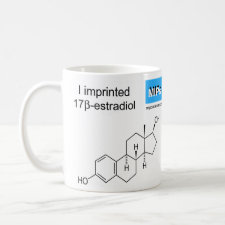
Authors: Le Noir M, Guieysse B, Mattiasson B
Article Title: Removal of trace contaminants using molecularly imprinted polymers.
Publication date: 2006
Journal: Water Science And Technology
Volume: 53
Issue: (11)
Page numbers: 205-212.
DOI: 10.2166/wst.2006.354
Abstract: This work was conducted to study the potential of molecularly imprinted polymers (MIPs) for the removal of oestradiol at trace concentrations (1 ppm - 1 ppb). An MIP synthesised with 17β-oestradiol as template was compared to non-imprinted polymers (NIP) synthesised under the same conditions but without template, a commercial C18 extraction phase and granulated activated carbon. At 1 ppb,oestradiol was recovered by 98 ± 2% when using the MIP, compared to 90 ± 1, 79 ± 1, and 84 ± 2% when using the NIP, a C18 phase, or granulated activated carbon, respectively. According to these levels, the MIP was capable of producing an effluent with a quality 5 - 10 times higher than the other materials. The same levels of oestradiol recovery were achieved with the MIP when supplying 17β-oestradiol at 0.1 ppm. Phenolic compounds added as interferences bound less to the MIP than to the NIP, confirming the selectivity of the MIP. Oestradiol biodegradation was also demonstrated at high concentrations (50 ppm), showing the pollutants can be safely destructed after being enriched by molecular extraction. This study demonstrates the potential of molecular imprinted polymers as a highly efficient specific adsorbent for the removal of trace contaminants
Template and target information: 17β-oestradiol
Author keywords: endocrine disrupters, MIP, oestradiol, solid phase extraction



Join the Society for Molecular Imprinting

New items RSS feed
Sign-up for e-mail updates:
Choose between receiving an occasional newsletter or more frequent e-mail alerts.
Click here to go to the sign-up page.
Is your name elemental or peptidic? Enter your name and find out by clicking either of the buttons below!
Other products you may like:
 MIPdatabase
MIPdatabase









